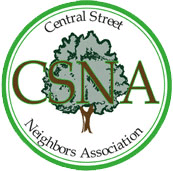Gardening with Native Plants in Shady Evanston
I love that we're a Tree City, but if, like me, your yard is shaded by some big ones, growing stuff at ground level can be a challenge. For years I've asked greenhouses and nurseries, what does well in shady places where there's still snow into April? "Moss," and "mushrooms," they usually laugh, but I'd hoped for something leafier.
My wife and I inherited some of the ubiquitous Evanston shade plants: hosta, euonymus, pachysandra, and lilies of the valley. We also had success adding some bishop's-hat (epimedium), false lamium, lungwort, and spotted dead nettle. But until about a decade ago, most of the perennials in my woodlands area were cultivars from Europe or Asia.
Since then I've learned how important it is to our remaining forests and prairies, and to wildlife from humble honeybees all the way up to the top of the food chain, to prevent the spread of non-native species. The best way to do that is by planting what used to grow here naturally.
I haven't ripped out a lot of my foreigners, but for anything new I put in, I've looked for plants native to Illinois, or at least midwestern or northern U.S. native species. As it turns out, these species are often the best suited for a garden in Illinois, and will succeed where some imports fail. Plus, finding them is sometimes an adventure.
I started this "book" with a dozen pix from my garden. To read it, click links below. Each "page" then provides links to the next or previous page. If you want, you can leave the book and just tour the Image Gallery, where you can see bigger pictures. I originally put the same text in each, but this book now has more.
This book will be an ongoing project, to photograph and describe some of the alternatives to the usual suspects. While it's addressed to "shady Evanston," it applies equally well to anywhere shady and/or moist in WIlmette, Rogers Park, anywhere along the North Shore or north Chicago lakefront, or for that matter most of Chicagoland (although the microclimate has more extremes inland). Some are hard to track down; others are no further a hunt than your own lawn (or at least mine). Because it's a "book," it is collaborative; feel free to add your own contributions and comments!
- Printer-friendly version
- Log in to post comments
